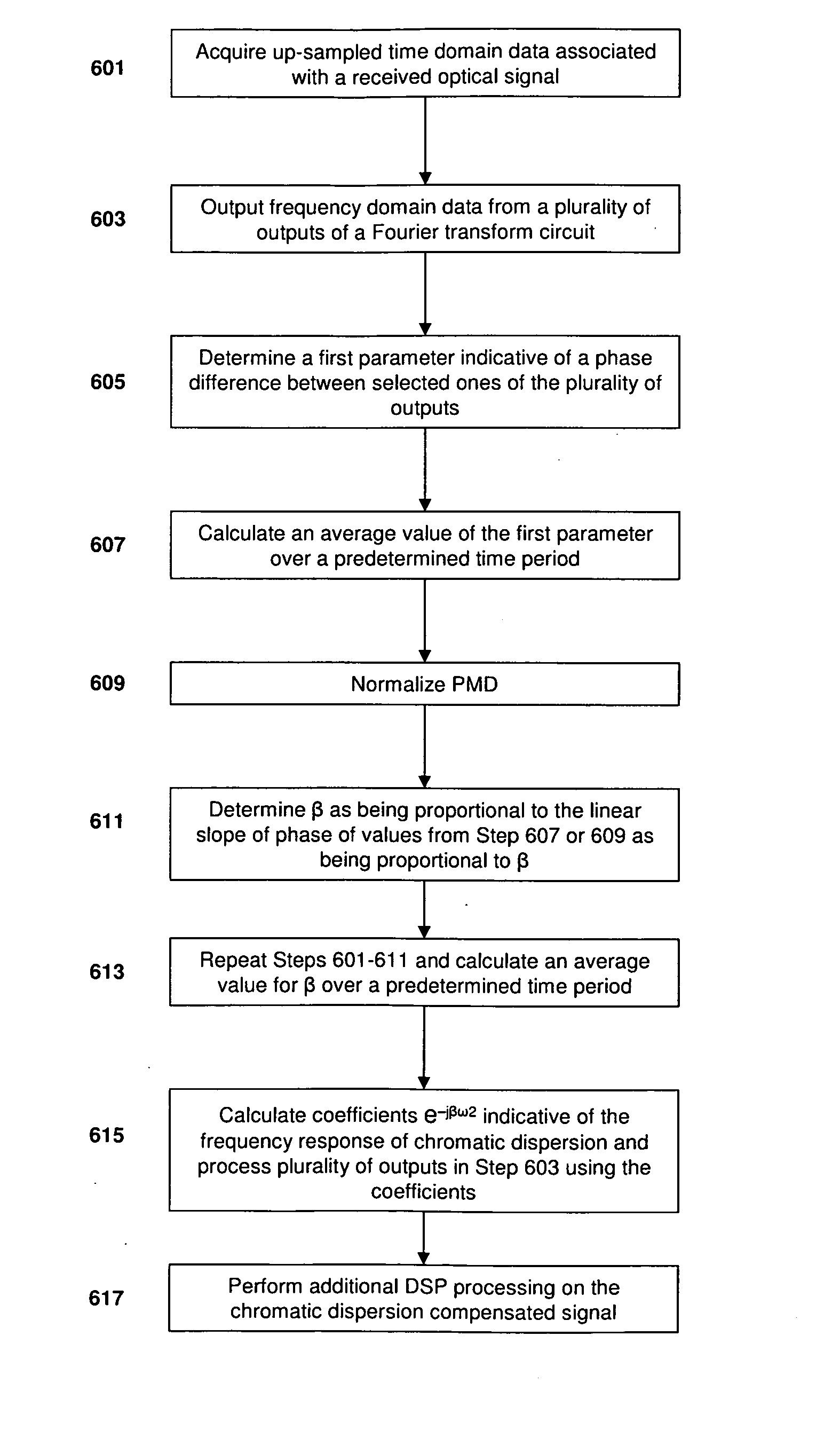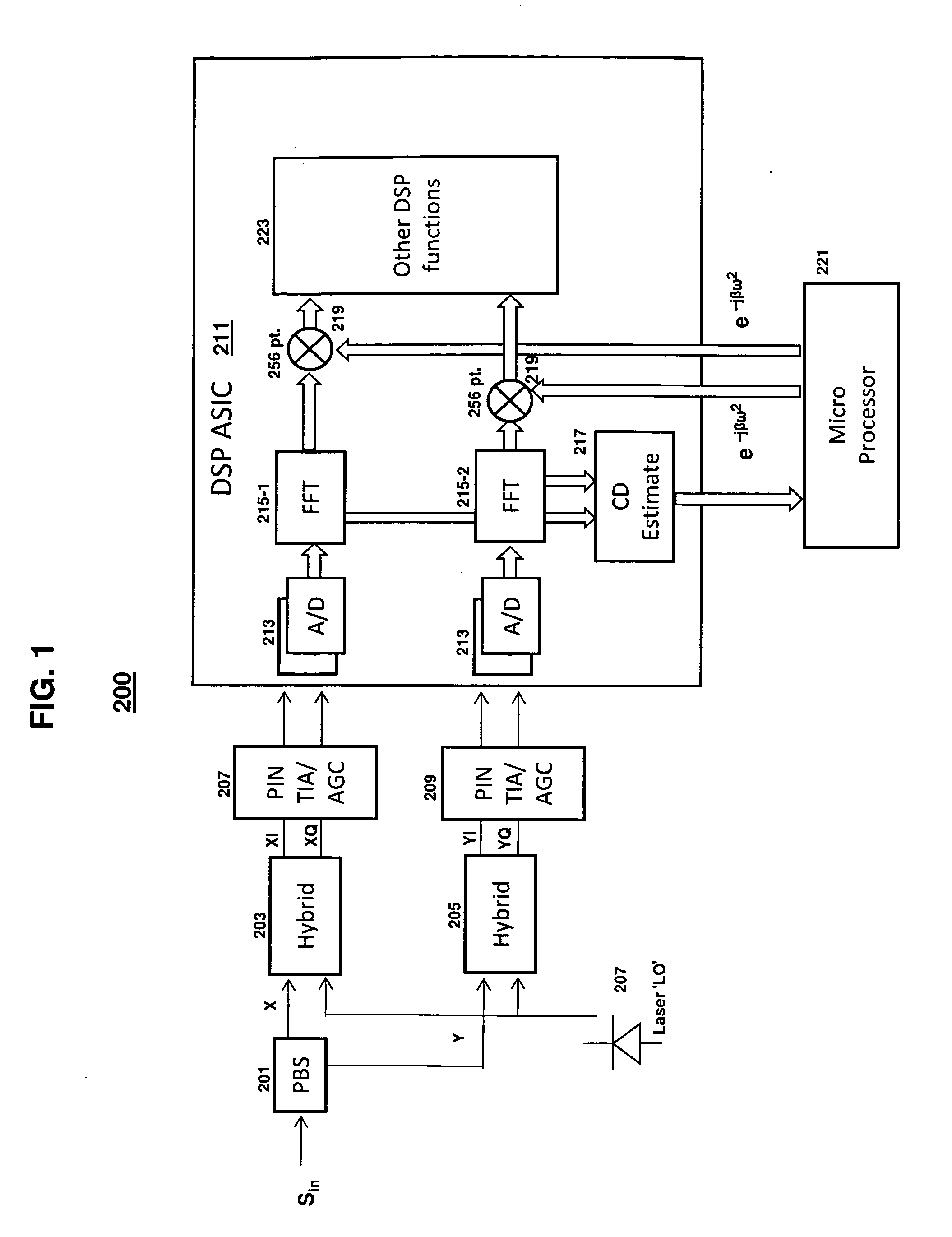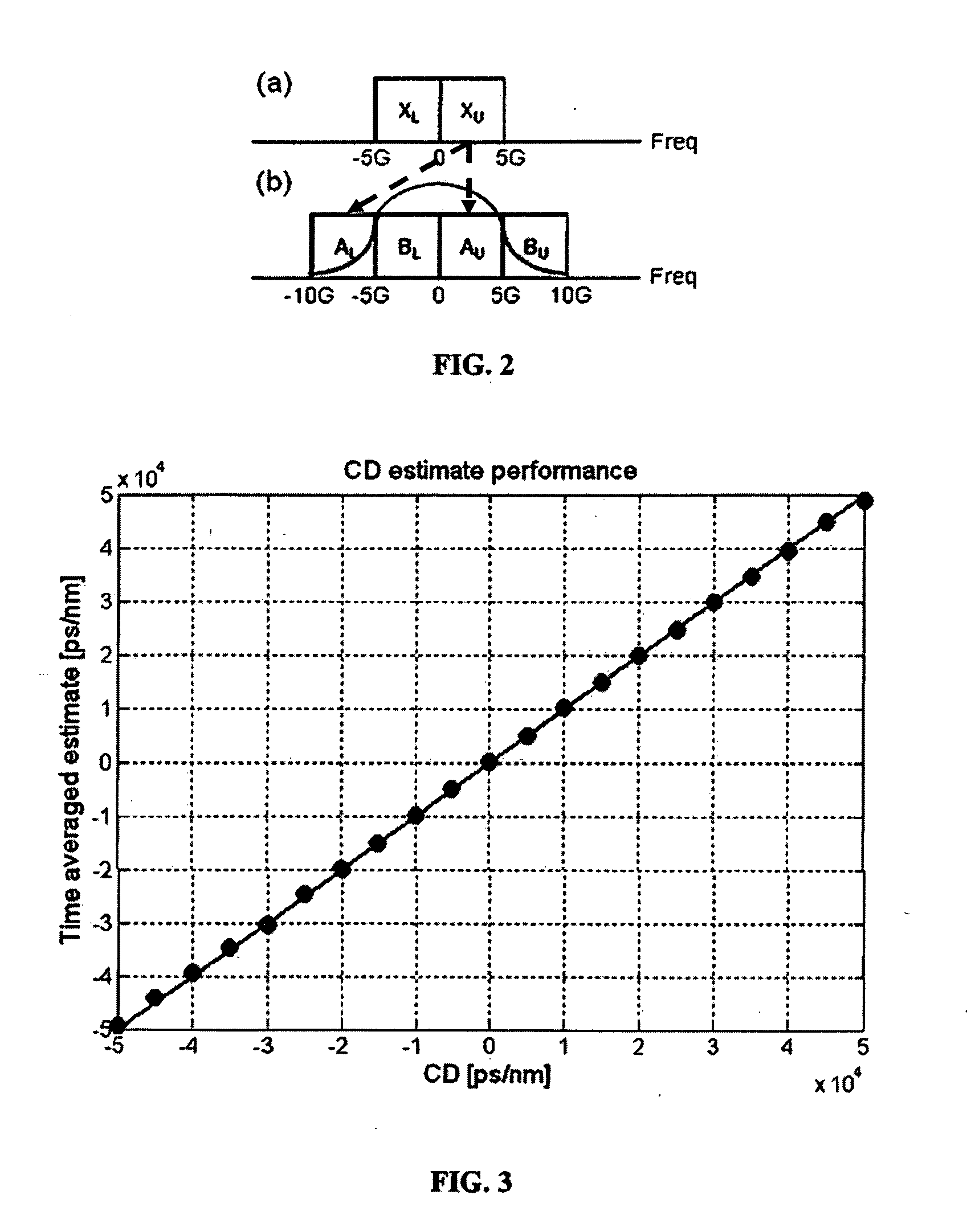PMD-insensitive method of chromatic dispersion estimation for a coherent receiver
a chromatic dispersion estimation and coherent receiver technology, applied in electromagnetic transmission, electrical equipment, transmission, etc., can solve the problems of optical communication system performance, undesirable temporal spreading of optical signals, and pmd cannot be easily determined or compensated in a conventional optical communication system
- Summary
- Abstract
- Description
- Claims
- Application Information
AI Technical Summary
Problems solved by technology
Method used
Image
Examples
first embodiment
[0028]To demonstrate that exemplary methods of estimating chromatic dispersion according to the present disclosure are insensitive to PMD, estimating chromatic dispersion in an optical receiver will be explained with respect to FIG. 2. According to this first exemplary embodiment, a singularly polarized transmitted optical signal is processed in the receiver, as discussed above. A sample 10 Gbaud data spectrum of the singularly polarized transmitted signal is shown in FIG. 2(a). XU represents the random data spectrum in the upper side band of the X polarized transmitted signal, and XL represents the random data spectrum in the lower side band of the X polarized signal. To compensate for the chromatic dispersion in the optical communication system through which the polarized optical signal was transmitted, the exemplary method determines a phase difference between related frequency domain data of the received signal as a function of frequency. As discussed further below, the frequenc...
second embodiment
[0036]For example, if averaging the dot product of Eqn. 3 for 64 clock cycles, results in a 2 p rotation of the phase in each of the frequency components of Eqn. 3 with a 200 ppm clock offset, then the averaging in Eqn. 3 does not yield any useful information. Therefore, with a 200 ppm clock offset, the number of clock cycles used in the averaging step should be reduced to say 16 or less. In turn, the smaller the amount of clock offset, the greater the number of clock cycles can be used during the time-averaging step. This concept is discussed in greater detail with respect to the second embodiment below.
[0037]When a 256-pt FFT is used in a receiver consistent with an exemplary embodiment, the above estimate is satisfactory even if the receiver clock is not locked and there is 100 ppm offset. FIG. 3 depicts the performance of the estimated chromatic dispersion in this embodiment without PMD or other polarization effects with respect to the actual chromatic dispersion for a QPSK modu...
PUM
 Login to View More
Login to View More Abstract
Description
Claims
Application Information
 Login to View More
Login to View More - R&D
- Intellectual Property
- Life Sciences
- Materials
- Tech Scout
- Unparalleled Data Quality
- Higher Quality Content
- 60% Fewer Hallucinations
Browse by: Latest US Patents, China's latest patents, Technical Efficacy Thesaurus, Application Domain, Technology Topic, Popular Technical Reports.
© 2025 PatSnap. All rights reserved.Legal|Privacy policy|Modern Slavery Act Transparency Statement|Sitemap|About US| Contact US: help@patsnap.com



